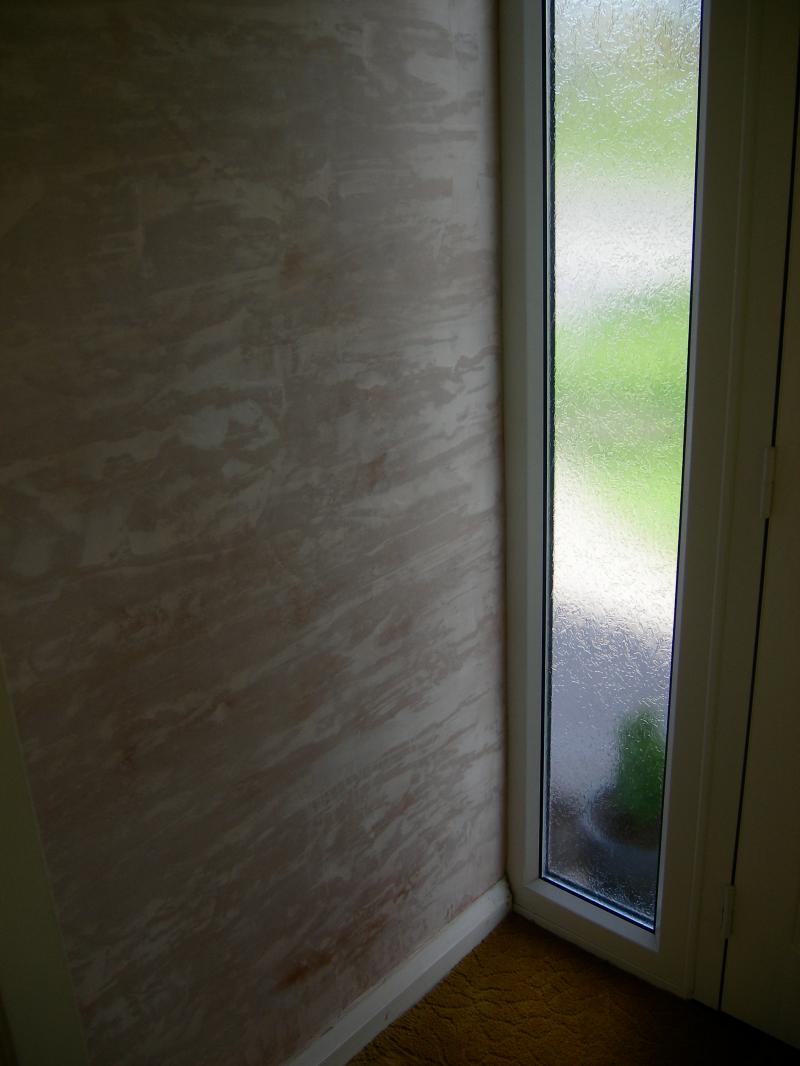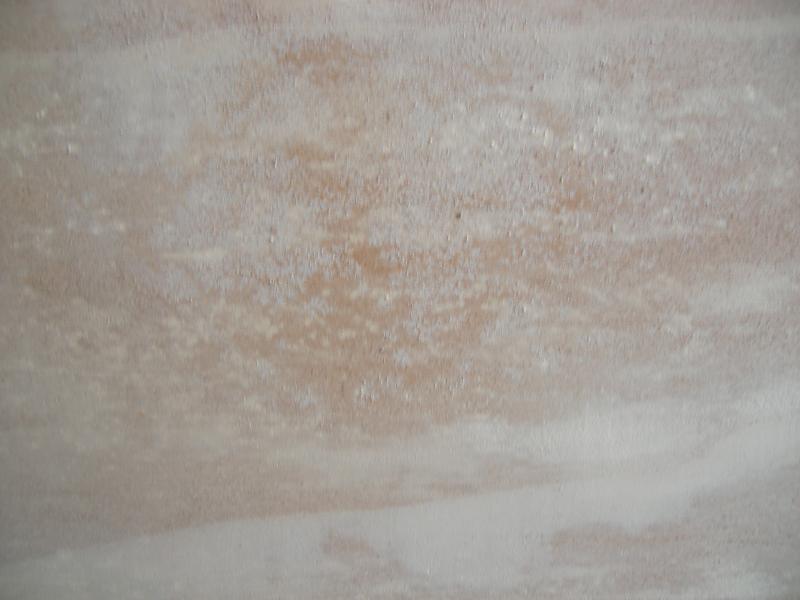Hello all,
I'm struggling with the plaster in my porch and hoping for some advice to correct.
A new front door (uPVC double glazed) was fitted in Oct, as the old wooden door wasn't good. One of the walls had taken a bit of damage when the old door was taken out, so I saw a good opportunity to have a go on a small wall - and correct later if all did not go to plan.
The original wall was the same as the rest of the house internally(blockwork with a grey browning coat with a thin grey skim of plaster. This had been painted with what looked like a silk emulsion)
I applied a 3:1 mix of PVA and when tacky, skimmed over the wall. The new multi-finish has held fine. (this was my first wall and with a budget trowel - my pre-marshalltown days - - I have improved!
- I have improved!  )
)
The problem I am having is the new plaster has not dried out completely. There are a handful of slightly darker patches and am now starting to get a bit of 'salt', as you may be able to make out in the close up
There are prob about 4 or 5 small patches - between the bottom and no higher than about halfway up.
The porch is not heated, and in the winter the double glazing picked up quite a bit of condensation. The wall shown here is an internal one and behind it is the front room.
I am wondering if the problem is likely to be condensation - and the uPVC
has now reduced ventilation also. There is no air brick or anything.
I've read some of the posts regarding condensation etc. There hasn't been anything noticeable on the double glazing in the last month or so.
So I don't think the test advised in the posts on condensation (to stick some clear polythene to the wall to see which side condenses etc) would work at the moment.
 Is condensation likely to be a cause of patchy damp spots like this?
Is condensation likely to be a cause of patchy damp spots like this?
 any suggestions to fix? Take the hit and add an air brick (the opposite wall to this is external)? Get a trickle vent put into the uPVC frame on the windows to the side of the door? Can you brush it down and are there any water proof paints that would cover it (assuming it dries in the summer months)? D&D foil backed PB?
any suggestions to fix? Take the hit and add an air brick (the opposite wall to this is external)? Get a trickle vent put into the uPVC frame on the windows to the side of the door? Can you brush it down and are there any water proof paints that would cover it (assuming it dries in the summer months)? D&D foil backed PB?
Any advice appreciated as always.
I'm struggling with the plaster in my porch and hoping for some advice to correct.
A new front door (uPVC double glazed) was fitted in Oct, as the old wooden door wasn't good. One of the walls had taken a bit of damage when the old door was taken out, so I saw a good opportunity to have a go on a small wall - and correct later if all did not go to plan.
The original wall was the same as the rest of the house internally(blockwork with a grey browning coat with a thin grey skim of plaster. This had been painted with what looked like a silk emulsion)
I applied a 3:1 mix of PVA and when tacky, skimmed over the wall. The new multi-finish has held fine. (this was my first wall and with a budget trowel - my pre-marshalltown days -
The problem I am having is the new plaster has not dried out completely. There are a handful of slightly darker patches and am now starting to get a bit of 'salt', as you may be able to make out in the close up
There are prob about 4 or 5 small patches - between the bottom and no higher than about halfway up.
The porch is not heated, and in the winter the double glazing picked up quite a bit of condensation. The wall shown here is an internal one and behind it is the front room.
I am wondering if the problem is likely to be condensation - and the uPVC
has now reduced ventilation also. There is no air brick or anything.
I've read some of the posts regarding condensation etc. There hasn't been anything noticeable on the double glazing in the last month or so.
So I don't think the test advised in the posts on condensation (to stick some clear polythene to the wall to see which side condenses etc) would work at the moment.
Any advice appreciated as always.



